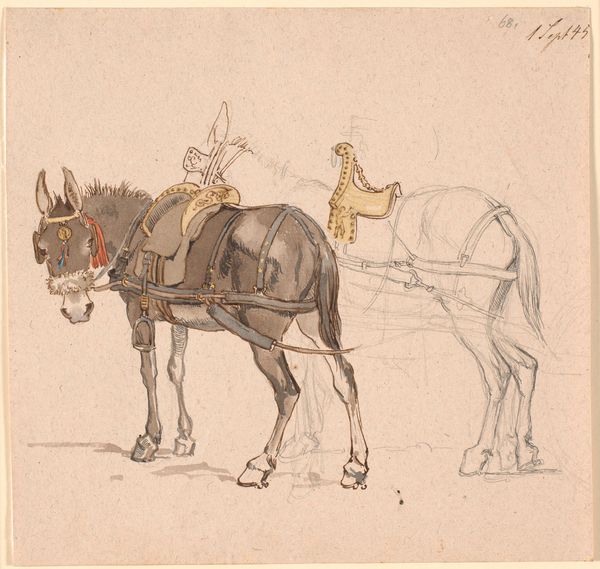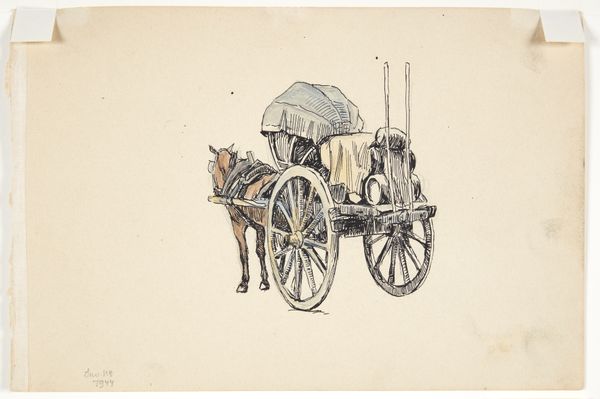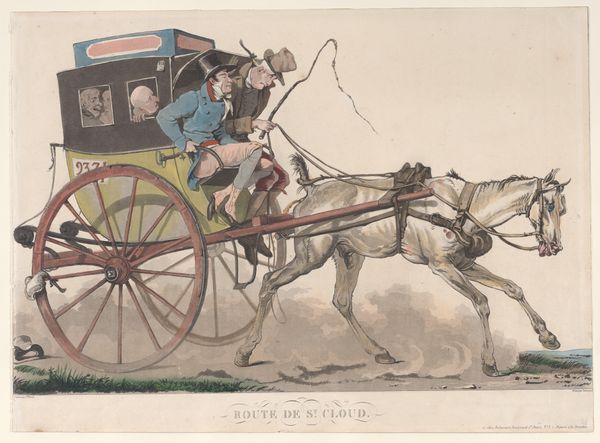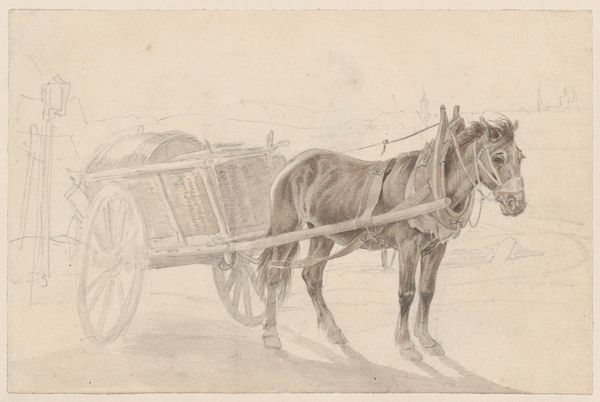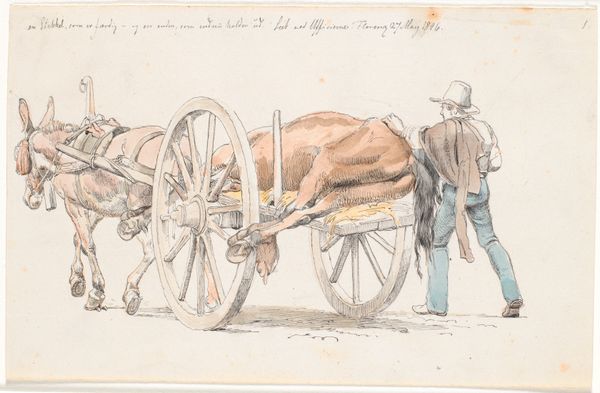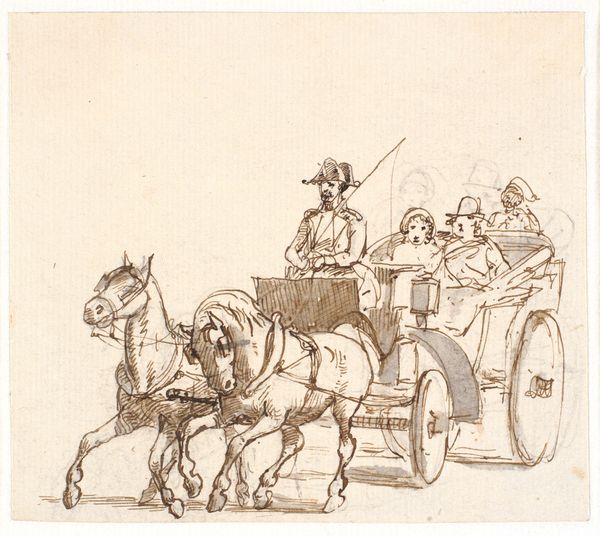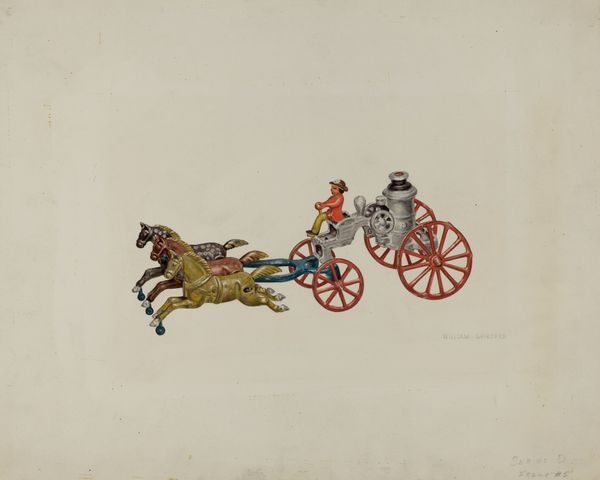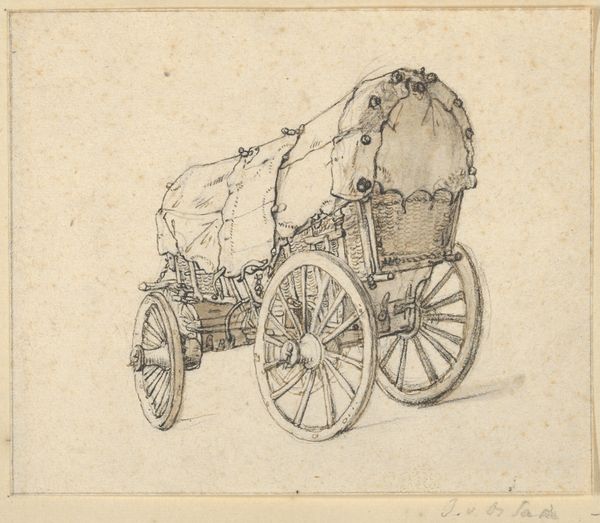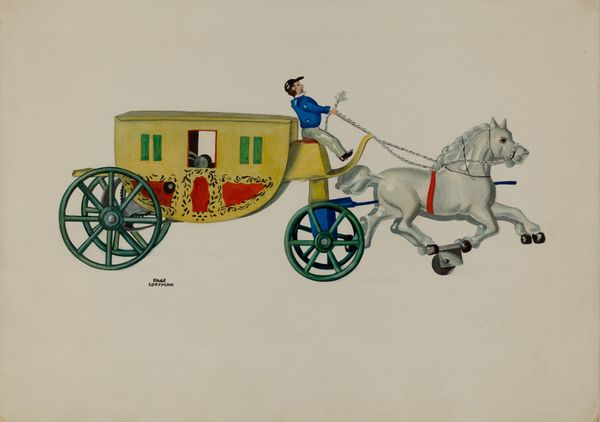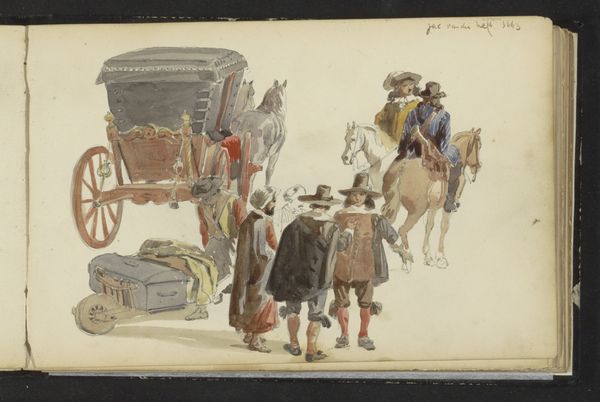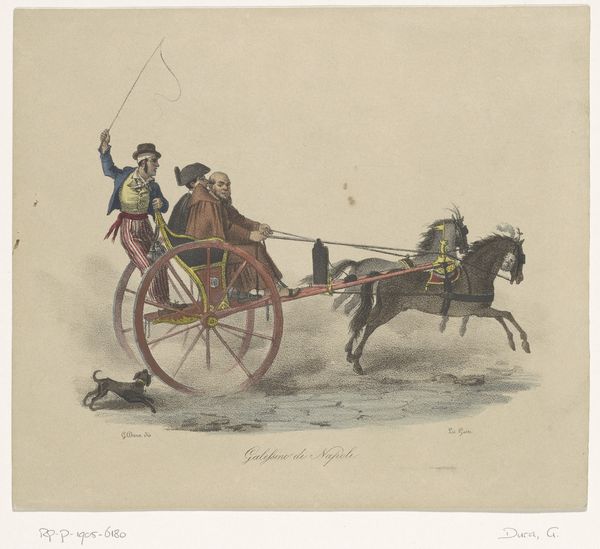
A man driving a cart pulled by mules, from a group of drawings depicting Peruvian dress 1843 - 1853
0:00
0:00
drawing, watercolor
#
drawing
#
landscape
#
watercolor
#
coloured pencil
#
men
#
genre-painting
#
watercolor
#
realism
Dimensions: Sheet: 8 1/16 × 9 1/16 in. (20.4 × 23 cm)
Copyright: Public Domain
Editor: This watercolor by Francisco Fierro, painted sometime between 1843 and 1853, depicts a man driving a cart pulled by mules. It feels like a very direct, unvarnished look at everyday life. What do you see in this piece? Curator: I see a snapshot of Peruvian society rendered through the lens of its labor force. Fierro was very interested in portraying different social types. We must consider the piece not merely as a quaint genre scene but as a document that implicitly critiques or at least reveals social stratifications and economic activities. Think about where these images were displayed. What audience was consuming them and how did they contribute to the public’s understanding of Peruvian identity and class? Editor: So, it's less about the individual man and his mules, and more about what they represent within the broader social fabric? Curator: Precisely. Fierro was documenting the different social actors present in Lima at that moment. These images are about representation, both in the artistic sense and in the socio-political one. Who gets to be seen and how? Also, notice the relatively small scale of the work. It probably circulated within albums amongst a specific, moneyed class of people. Editor: It's amazing how much you can read into a simple watercolor. I guess art always reflects the society it comes from. Curator: Exactly. And institutions like museums shape our understanding of art by selecting what is displayed and offering ways of interpretation. We should always think about these choices and their implications when analyzing artworks. Editor: That really reframes the piece for me. It is not *just* a man and his mules anymore. Curator: Absolutely. Examining it as a document deeply embedded in its time and considering its circulation reveals it as a powerful socio-historical object.
Comments
No comments
Be the first to comment and join the conversation on the ultimate creative platform.

